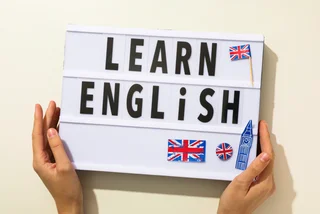The Organisation for Economic Co-operation and Development (OECD) recently released its annual "Education at a Glance" report, which provides an overview and comparison of education systems across its 38 member countries.
Using data provided for the latest available year, the report identifies current trends and breaks down a number of areas critical to a country's educational progress, which range from financial resources invested in education to access to education.
The report contains a tool that is useful for anyone who has struggled to understand the complexities of an education system that offers numerous pathways for students and brings difficult decisions to their parents relatively early on.

No matter what path your child is on in the Czech public school system, you'll want to read the findings from the OECD's report, summarized below.
Czechia saw a surge in international students during the pandemic
Participation in early childhood education increased in the Czech Republic from 11 percent of 2-year-olds to over 70 percent of 3-4-year-olds and over 80 percent of 5-year-olds. Compulsory education runs from ages 6-15, with most students graduating upper secondary between the ages of 19-20, as in most OECD countries.
In the Czech Republic, 73 percent of 15-19-year-olds are in upper secondary education, with 51 percent in vocational programs. Bachelor's degrees make up 87 percent of new tertiary students, higher than the 76 percent OECD average. Unlike some countries, the Czech Republic saw its share of international tertiary students increase from 14 percent in 2019 to 16 percent in 2021 during the pandemic.
Vocational graduates face higher unemployment in Czechia
The OECD report found that while high-quality vocational education programs can effectively integrate learners into the workforce, their quality and importance vary between countries. In the Czech Republic, 24 percent of 25-34-year-olds have vocational qualifications, below some OECD averages. Unlike most countries, Czech vocational education graduates face higher unemployment than general secondary graduates. While tertiary degrees provide higher returns, strengthening vocational options could benefit the Czech system.
Czechia slightly below average in education spending
The OECD on average spends 5.1 percent of GDP on education while the Czech Republic spends 4.5 percent. Of Czech spending, 23 percent is for primary education, 28 percent is for lower secondary, 24 percent is for upper secondary, and 25 percent is for bachelor's through to doctoral programs.
The Czech Republic spends USD 11,846 per full-time student, similar to the OECD average of USD 12,647, but above average as a share (28 percent) of per capita GDP (27 percent). Six percent of Czech funding goes to general upper secondary and 17 percent to vocational, while private sources contribute 7 percent compared to 9 percent across the OECD. Most Czech education funding (67 percent) comes from regional governments.
Czech teachers older than OECD average, salaries are significantly lower
Compulsory education time is lower in the Czech Republic at 6,984 hours over nine grades compared to the OECD average of 7,634 hours. The Czech Republic spends more time on reading/writing and math at primary versus lower secondary.
Upper secondary teacher salaries are significantly lower in the Czech Republic at USD 29,180 compared to the OECD average of USD 53,456, though they increased 28 percent from 2015-2022.
Teacher costs per primary student are lower in the Czech Republic at USD 2,099 versus USD 3,614 across the OECD partly due to smaller class sizes but mainly lower salaries. At upper secondary, 53 percent of Czech teachers are over 50 compared to 39 percent for the OECD average. The Czech Republic has national assessments at primary and lower secondary levels and one exam at the upper secondary level.
The Czech education system is currently grappling with various challenges, including a severe shortage of space at both early and higher education levels.
A proposed amendment to increase parental allowances, currently under parliamentary discussion, seeks to raise it by CZK 50,000 next year while reducing the claim duration from four to three years. This may further burden kindergartens, especially in Prague, where an estimated 12,000 additional spaces will be needed by 2050.
In higher education, the Czech University Trade Union plans a one-hour nationwide strike on Oct. 17 to demand increased funding for higher education and improved salaries for university staff. Simultaneously, humanities and social science academics will stage a full-day strike to highlight the ongoing issue of underfunding in universities.












 Reading time: 3 minutes
Reading time: 3 minutes 































